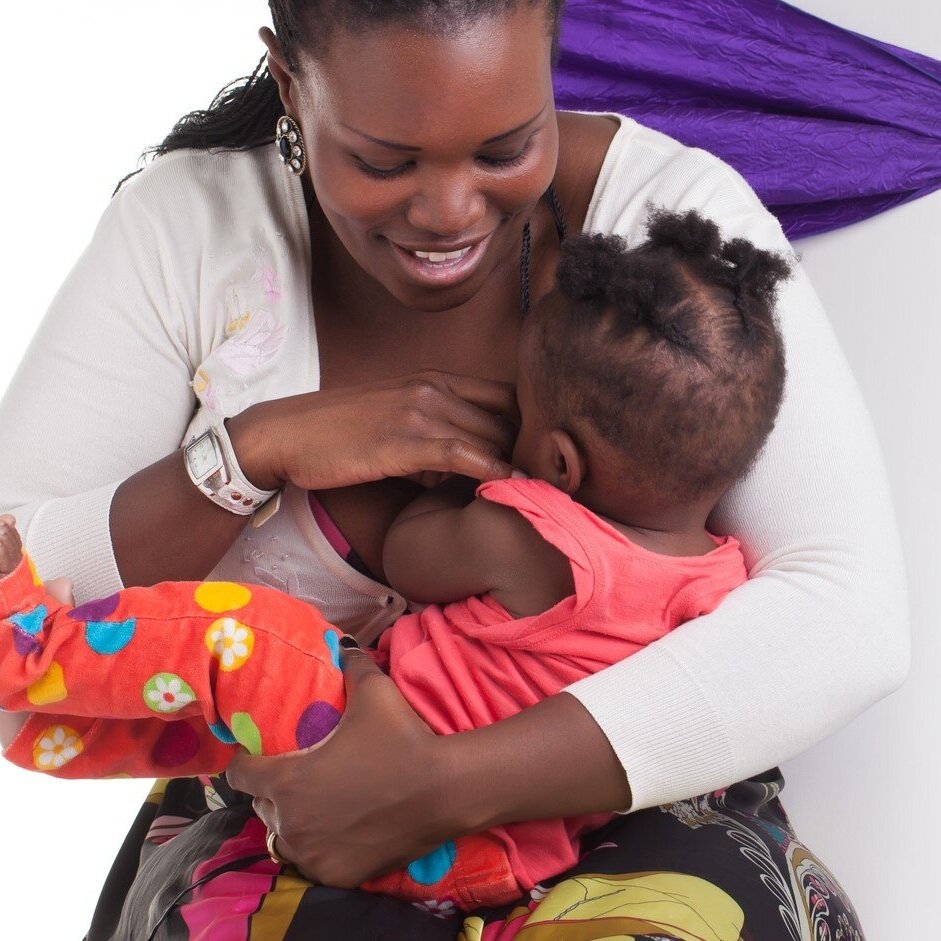
position and latch
Position and latch are key princliples in breastfeeding. Whilst they sound simple and straight forward, as with most things, it does take time and practice to get right. Doing a bit of early research is a good idea. It is perfectly normal to struggle with these two components of breastfeeding. Get some practical hands on help to check that latch and position are optimised.
Feeding station
Before you sit down to start a feed, you might want to set up a feeding station. This can be in an area of your house, or it can be in a small grab bag / wash bag for out and about. What you need at your feeding station will be entirely unquie to you, but here are somethings you might find helpful.
Water. For a lot of mums, latching a baby on results in an immeasurable thirst. Make sure you have a bottle of water close at hand.
Muslin cloths. for leaky boobs and burping babes.
Breastpads.
Nipple cream
Nipple shields and shells
Tissues
Chocolate (any excuse)
You might be stuck for an hour, so anything you might need should go in the grab bag.
Latch
Latch is how your baby is attached onto your breast during a feed. Whilst describing latch will give you a general idea, really you need to see it. There are plenty of online materials and nothing beats having your midwife show you, so you also know what it feels like. Most people will say a good latch is pain free, and indeed, if it is painful, you definitely need someone to have a look. Sometimes pain comes from an inadequate latch and sometimes it is caused by something else.
Your baby should have a big wide mouth, they need to get nipple and breast tissue into their mouth. Feeding off just a nipple will cause nipple trauma. For some, the anatomy of the early days means getting a good latch is impossible. If you have big nipples and your baby has a small mouth, you might struggle. Don’t panic, mouths grow, and quicker than you think and engorged nipples and breast tissue settles. So it is important that you get things assessed and reassessed. It is absolutely your right to press for help. It is a sad situation, but we do have to fight for support sometimes. Never worry about being a nuisance, in fact, be a nuisance, do what you need to do.
Once your baby has a big mouthful of breast tissue, their body should lie tight into yours. In order to achieve this, you bring your baby towards your boob and not taking your boob to your baby. Your babies chin should be touching your breast and their bottom lip should be turned out. Once your baby has popped off, look at your nipple, it should be a normal shape, if it is pinched or lipstick shaped then you might have a problem with latch. If the latch isn’t right, then your nipple might rub on your babies hard pallet, this causes friction burns, bleeding, and pain.
Positions
Please note that feeding a baby should never be “hands free”.
Laid back
This is pretty much what is sounds like. Used primarily in the early days, it is a way to maximise skin to skin and allow your baby to ‘find their way’.
How is it done? Lie at a 45 degree angle, usually with top off. Lie your baby on your chest, in line with your own body position. Support your self with a good cushion. This position is to allow your babies natural rooting instinct and should aid a deeper latch. We have a blog post on this position and as it demonstrates, it is not always the romantic ideal textbooks would have you believe but when you have it nailed it can be really beneficial for helping with over supply.
Cradle
The classic feeding position making it the go to for most breastfeeding mums. Your baby lies across your body, your arm supporting their body. Their head should be able to flex back, so try and avoid holding the back of their head. This allows the baby to latch properly. Some people will find it easiest to get a good deep latch before settling into the cradled arm hold. But be warned, any movement after your baby has latched, may result in them slipping and nipple feeding. It’s usually a good idea to have a good feeding pillow or cushion to support your cradling arm again to avoid your baby slipping off. If your baby is on properly, their ear, shoulder and hip should be in a straight line against the body. If you raise your legs slightly it will prevent you from leaning forward and hurting your back. This position whilst great for most, those who have had c-sections may find it uncomfortable as your baby might sit across your scar. If your nipples have had trauma when feeding in cradle, then try a different position.
Rugby ball
This position is the go to for a particular cohort of mums. It is a great position for feeding multiples at the same same, aka tandem feeding. It is good for keeping the baby away from c-section scars. It is good for mums who struggle to empty the whole breast with the cradle position, or for those who have nipple damage and need to rest parts of their nipple. You sit with your baby under your arm (like a rugby ball), their nose pointing up towards the nipple. The lower lip will be on the outer side of the breast, as opposed to the inner side with the cradle. Again you want to support the neck, but not to impede flexion. Once latched they will be close to your side with their hips close to your hips. Again use pillows to help support your arms.
Lying on side
When you are establishing feeding, and particularly if you are having any difficulties, then at night you should get up out of bed, sit in a well supported chair and feed there. However, once you are on a roll and mastered a good latch, then the side feed is a great night time go to. Lying tummy to tummy, with your baby in a straight line, check ear, shoulder and hip are in line. You will probably need some support at your back, to stop you rolling. Use your not trapped arm to help guide your baby to a good latch, once latched, you may find that you don’t need to hold them. If you are struggling with staying awake then it is always best to get up out of bed to feed.
Dangle
If there is one position that is going to make you feel like a cow in a milking palour, it is the dangle. It does absolutely nothing for your self esteem, but absolutely everything for helping to empty a breast evenly. It is exactly how it sounds. You lay your baby on their back, nose to the sky. You then crouch on all fours over the top and dangle your breast for your baby to latch on. Whilst wholly impracticable for out and about feeds unless you want to raise a few eyebrows, it is magic for getting gravity to aid unblocking a duct.
Sling feeding
Sling feeding can be particularly useful for feeding out and about. It can be very discreet, and indeed often people won’t know you are feeding, depending on your sling. Your baby needs to have some degree of head control which happens around six weeks and their head will still need supporting so it is not hands free. Depending on where your breast ends… (sob)…. you may need to loosen your sling. The downside of sling feeding is that for some babies, they may start to associate the sling with feeding, so if you want to have sling time without a boob out, it may become tricky.
